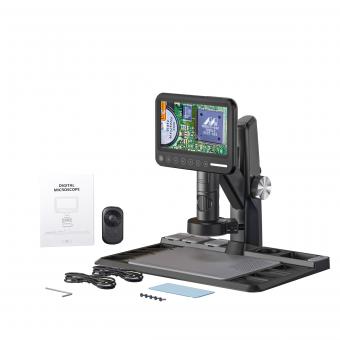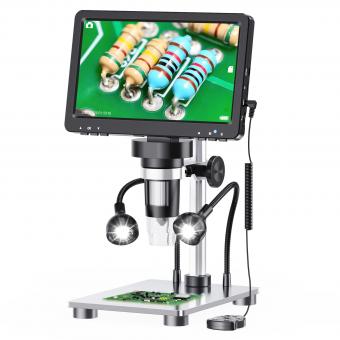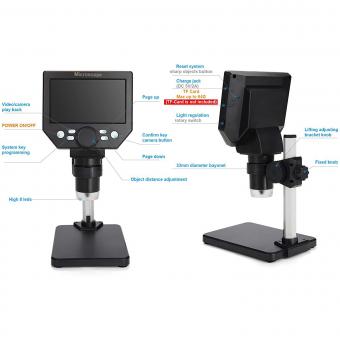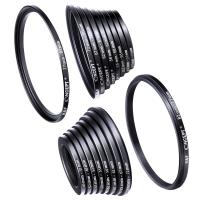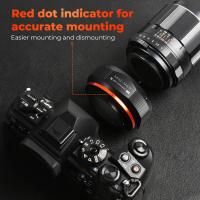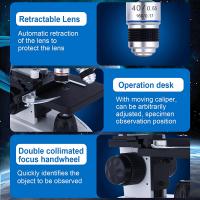Which Scientist First Observed Cells Under A Microscope ?
The first scientist to observe cells under a microscope was Antonie van Leeuwenhoek, a Dutch scientist, in the late 17th century. He used a simple microscope to observe various specimens, including bacteria and blood cells. His observations helped to establish the field of microbiology and laid the foundation for the development of modern cell theory.
1、 Robert Hooke's observation of cells in 1665

Robert Hooke, an English scientist, was the first to observe cells under a microscope in 1665. He used a compound microscope to examine thin slices of cork and observed small, box-like structures that he called "cells" because they reminded him of the small rooms in a monastery. Hooke's discovery of cells was a significant milestone in the history of biology, as it led to the development of the cell theory, which states that all living organisms are composed of cells.
However, it is important to note that Hooke's observation of cells was limited by the technology of his time. The microscopes he used were relatively primitive, and he was only able to observe dead cells that had lost their internal structures. It was not until the development of more advanced microscopes in the 19th century that scientists were able to observe living cells and study their internal structures and functions.
Today, our understanding of cells has advanced significantly, and we know that they are the basic building blocks of all living organisms. Cells are incredibly complex structures that perform a wide range of functions, from producing energy to carrying out specialized tasks like transmitting nerve impulses. Scientists continue to study cells to better understand how they work and how they can be used to develop new treatments for diseases.
2、 Robert Hooke

Robert Hooke, an English scientist, was the first to observe cells under a microscope in 1665. He used a primitive microscope to examine a thin slice of cork and noticed small, box-like structures that he called "cells" because they reminded him of the small rooms in a monastery. Hooke's discovery of cells was a significant milestone in the history of biology, as it marked the beginning of the study of the microscopic world.
However, it is important to note that Hooke's observations were limited by the technology of his time. His microscope was not powerful enough to see the internal structures of cells, and he did not fully understand the significance of what he had observed. It was not until the development of more advanced microscopes in the 19th century that scientists were able to fully appreciate the complexity of cells and their role in living organisms.
Today, our understanding of cells has advanced significantly, and we now know that they are the basic building blocks of all living things. Cells are incredibly diverse and complex, with a wide range of functions and structures. They are involved in everything from energy production to immune defense, and they play a crucial role in the development and maintenance of all living organisms.
In conclusion, while Robert Hooke was the first to observe cells under a microscope, our understanding of cells has come a long way since his time. Thanks to advances in technology and scientific research, we now have a much deeper appreciation for the complexity and importance of these tiny structures.
3、 Microscopic observation

The scientist who first observed cells under a microscope was Antonie van Leeuwenhoek, a Dutch scientist, in the late 17th century. He used a simple microscope to observe various samples, including water, blood, and even his own dental plaque. He described the tiny organisms he saw as "animalcules" and was the first to observe bacteria, sperm cells, and red blood cells.
Since then, microscopic observation has become an essential tool in the field of biology, allowing scientists to study the structure and function of cells in detail. With the development of more advanced microscopes, including electron microscopes, scientists have been able to observe even smaller structures, such as organelles within cells.
Microscopic observation has also led to significant discoveries in the field of medicine, including the identification of viruses and the development of vaccines. It has also played a crucial role in understanding diseases at the cellular level, leading to the development of new treatments and therapies.
In recent years, advances in imaging technology have allowed for even more detailed and precise observations of cells and tissues. Techniques such as confocal microscopy and super-resolution microscopy have revolutionized the field, allowing scientists to study cellular processes in real-time and at unprecedented levels of detail.
Overall, microscopic observation has been a fundamental tool in the advancement of biological and medical sciences, and its continued development and refinement will undoubtedly lead to further discoveries and breakthroughs in the future.
4、 Cell structure

The scientist who first observed cells under a microscope was Antonie van Leeuwenhoek, a Dutch scientist, in the late 17th century. He used a simple microscope to observe various samples, including water, blood, and even his own dental plaque. He observed tiny, living organisms that he called "animalcules," which we now know to be bacteria and other microorganisms.
However, it was not until the 19th century that the cell theory was developed, which states that all living organisms are composed of cells. This theory was proposed by Matthias Schleiden and Theodor Schwann, who observed plant and animal tissues under a microscope and concluded that all living things are made up of cells.
Since then, our understanding of cell structure has continued to evolve. We now know that cells are not just simple blobs of protoplasm, but are complex structures with various organelles that perform specific functions. We have also discovered different types of cells, such as nerve cells, muscle cells, and blood cells, each with their own unique structures and functions.
In recent years, advances in technology have allowed us to study cells in even greater detail, such as using electron microscopes to observe the ultrastructure of cells and using fluorescent dyes to track specific molecules within cells. This has led to new discoveries and a deeper understanding of the complex processes that occur within cells.












